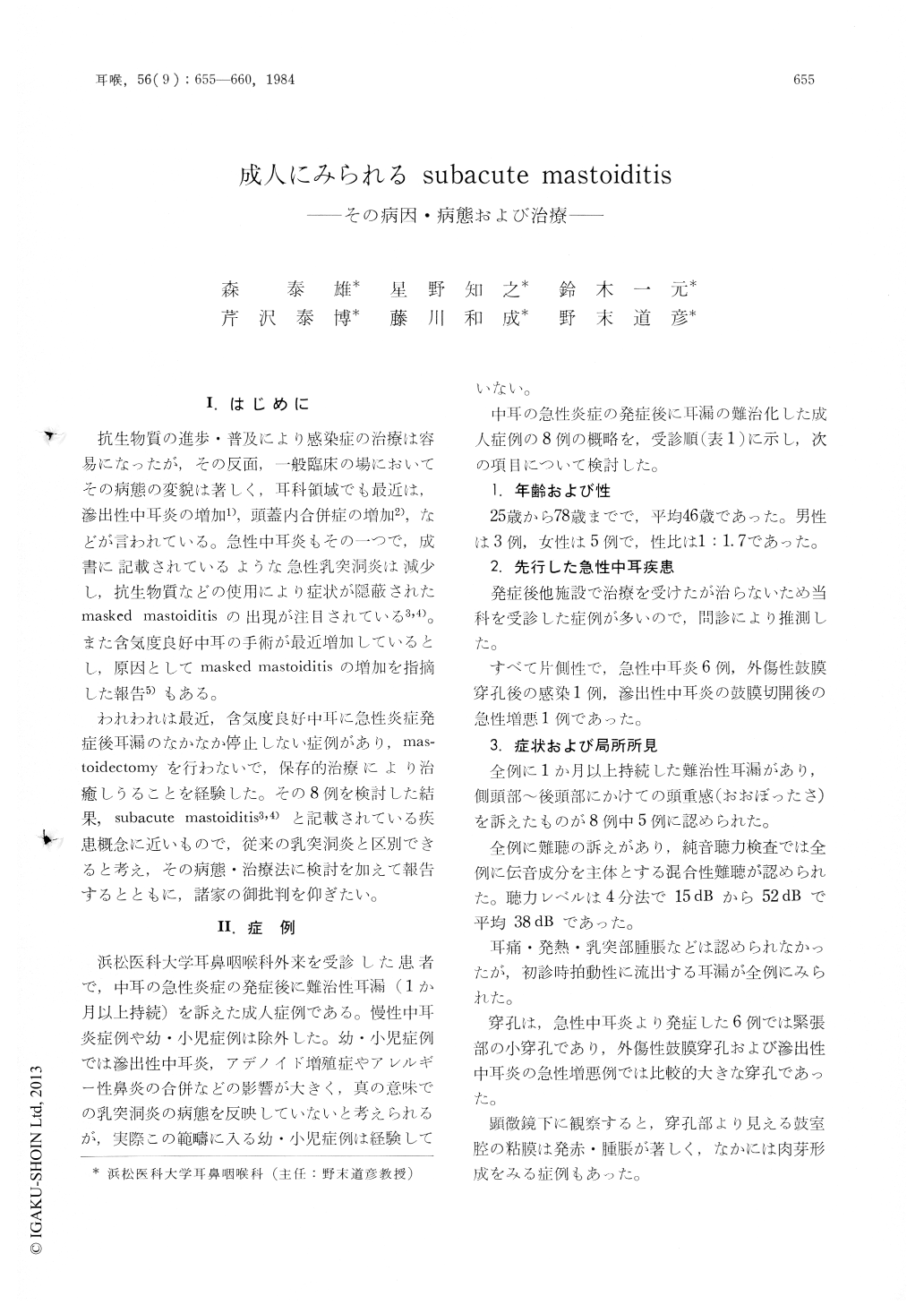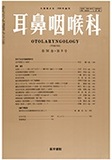Japanese
English
- 有料閲覧
- Abstract 文献概要
- 1ページ目 Look Inside
I.はじめに
抗生物質の進歩・普及により感染症の治療は容易になったが,その反面,一般臨床の場においてその病態の変貌は著しく,耳科領域でも最近は,滲出性中耳炎の増加1),頭蓋内合併症の増加2),などが言われている。急性中耳炎もその一つで,成書に記載されているような急性乳突洞炎は減少し,抗生物質などの使用により症状が隠蔽されたmasked mastoiditisの出現が注目されている3,4)。また含気度良好中耳の手術が最近増加しているとし,原因としてmasked mastoiditisの増加を指摘した報告5)もある。
われわれは最近,含気度良好中耳に急性炎症発症後耳漏のなかなか停止しない症例があり,mastoidectomyを行わないで,保存的治療により治癒しうることを経験した。その8例を検討した結果,subacute mastoiditis3,4)と記載されている疾患概念に近いもので,従来の乳突洞炎と区別できると考え,その病態・治療法に検討を加えて報告するとともに,諸家の御批判を仰ぎたい。
We presented eight cases of subacute mastoiditis treated in our clinic during recent few years.
This disease follows a previous acute ear infection and is characterized by the continued drainage of mucopurulent material from the middle ear with the well pneumatized mastoid after the subsidence of the signs and symptoms of the acute disease.
Trias of subacute mastoiditis consist of persistent otorrhea, conductive hearing loss and a feeling offullness on the parieto-occipital region. Intractable otorrhea is attributable to retention of pus in the mastoid air cells with overflow.
The underlying pathologic changes may bereversible so the conservative treatment without mastoidectomy is sufficient for inflammation of the middle ear.

Copyright © 1984, Igaku-Shoin Ltd. All rights reserved.


